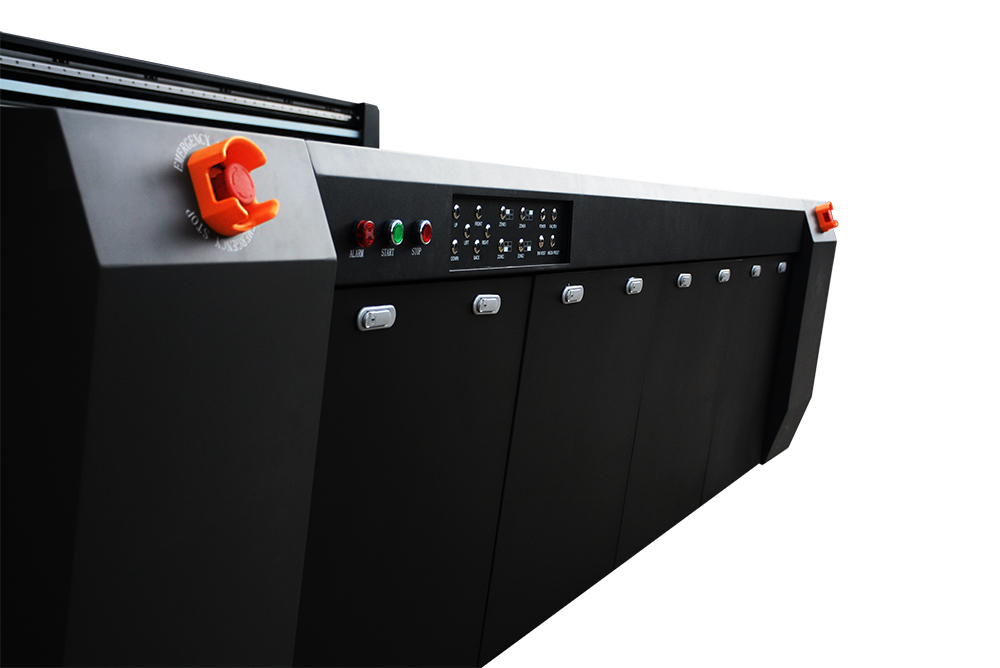UV Flatbed Printer: Understanding the Role of Print Heads
In the realm of digital printing technology, UV flatbed printers have emerged as a game-changer, revolutionizing the way images and designs are applied to a wide array of substrates. From ceramics and glass to metals and plastics, these versatile machines have pushed the boundaries of creativity and functionality in various industries, including advertising, decor, and packaging. At the heart of this innovative technology lies a critical component: the print head. This article delves into the intricacies of UV flatbed printer print heads, exploring their design, functionality, importance, and the advancements that continue to shape their evolution.

The Anatomy of a UV Flatbed Printer Print Head
A UV flatbed printer’s print head is a sophisticated device responsible for depositing ink onto the substrate in a controlled and precise manner. It consists of numerous nozzles, or jets, each capable of ejecting tiny droplets of ink at high speeds. These nozzles are meticulously arranged in a linear or matrix configuration, enabling the printer to achieve high-resolution prints with intricate details and vibrant colors.
The print head’s internal mechanism typically includes a piezoelectric or thermal element that activates the nozzles. Piezoelectric technology utilizes crystals that change shape when an electric current is applied, forcing ink out of the nozzles. On the other hand, thermal technology employs heat to create a bubble inside the nozzle, propelling the ink droplet outward. Both methods have their advantages, with piezoelectric systems often praised for their precision and durability, while thermal systems are known for their cost-effectiveness and rapid response times.
The Role of Print Heads in UV Flatbed Printing
Precision and Resolution: The primary role of the print head is to ensure that ink is deposited accurately onto the substrate. This precision is crucial for achieving high-resolution prints, where even the smallest details must be rendered clearly. The arrangement and control of nozzles allow for fine adjustments in ink placement, resulting in sharp images and smooth gradients.
Ink Ejection Control: The print head’s ability to control the size and timing of ink droplets is vital for maintaining print quality. Variable droplet sizes enable the printer to produce a wider range of tones and colors, while precise timing ensures that droplets are placed correctly, preventing issues like banding or overlapping.
Compatibility with UV-Curable Inks: UV flatbed printers use specialized inks that cure almost instantly when exposed to ultraviolet light. The print head must be designed to handle these inks effectively, ensuring they are ejected consistently and do not clog the nozzles. The rapid curing process allows for immediate handling of printed items, enhancing productivity.
Adaptability to Various Substrates: One of the standout features of UV flatbed printers is their ability to print on a diverse range of materials. The print head must be capable of adjusting its ink ejection parameters to accommodate different surface textures, thicknesses, and porosities. This adaptability ensures consistent print quality across various substrates.
Advancements in Print Head Technology
The field of print head technology is continuously evolving, driven by advancements in materials science, electronics, and software. Some of the notable developments include:
Increased Nozzle Density: Higher nozzle density allows for more ink droplets to be ejected per unit area, resulting in faster print speeds and improved resolution. This is particularly beneficial for large-format printing, where maintaining high quality while covering vast areas is essential.
Intelligent Nozzle Management: Modern print heads incorporate advanced sensors and algorithms to monitor and manage nozzle performance in real-time. This includes detecting and compensating for clogged or malfunctioning nozzles, ensuring uninterrupted printing and consistent output quality.
Variable Drop Technology: The ability to eject droplets of different sizes enables more nuanced control over ink deposition. This technology allows for smoother transitions between colors and tones, enhancing the overall visual appeal of prints.
Durability and Longevity: Print heads are subjected to significant wear and tear due to the high frequencies at which they operate. Manufacturers are continually improving materials and designs to extend the lifespan of print heads, reducing maintenance requirements and operational costs.
Maintenance and Care of Print Heads
Proper maintenance of print heads is crucial for sustaining optimal performance and print quality. Some best practices include:
Regular Cleaning: Ink residue and debris can accumulate on the nozzles, leading to clogs and reduced print quality. Regular cleaning cycles, using manufacturer-recommended solutions, help keep the nozzles clear and functional.
Humidity Control: Excessive humidity can cause ink to dry prematurely or affect its viscosity, impacting print head performance. Maintaining an appropriate humidity level in the printing environment can mitigate these issues.
Handling and Storage: Print heads are delicate components that should be handled with care. When not in use, they should be stored in a protected environment to prevent damage from dust, moisture, or physical impacts.
Software Updates: Manufacturers often release firmware updates that can improve print head performance, fix bugs, or introduce new features. Keeping the printer’s software up-to-date ensures that the print head operates at its best.
Conclusion
The print head is a fundamental component of UV flatbed printers, playing a pivotal role in determining print quality, speed, and versatility. Its intricate design, combined with advancements in technology, enables these printers to produce stunning, high-resolution prints on a wide range of substrates. Understanding the importance of print heads and adopting proper maintenance practices can significantly enhance the performance and longevity of UV flatbed printers, making them invaluable tools in the digital printing industry.
As technology continues to progress, we can expect even more innovative developments in print head design, further pushing the boundaries of what UV flatbed printers can achieve. Whether it’s through increased nozzle density, intelligent nozzle management, or improved durability, these advancements will undoubtedly contribute to the ongoing evolution of digital printing, empowering creatives and businesses alike to bring their visions to life with unparalleled precision and quality.
